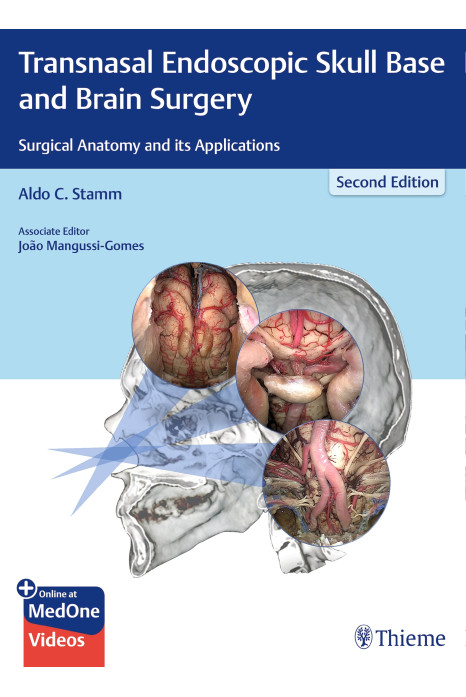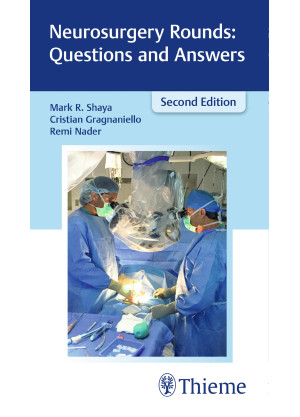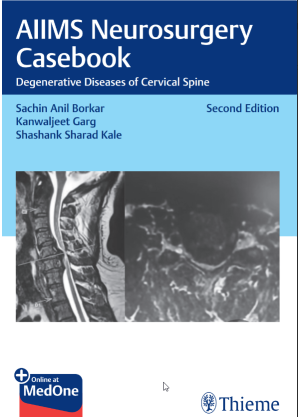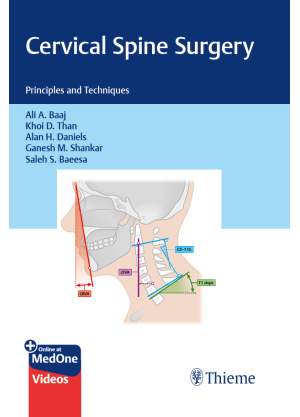Outstanding endoscopic skull base surgical resource presents cutting-edge approaches from multidisciplinary global experts
Transnasal endoscopic skull base and brain surgery have undergone major technical advances in recent years. The accumulation of experience and exciting technological innovations – including high-definition cameras, more ergonomic and precise surgical instruments, as well as new hemostatic agents – have enabled safer and more efficacious treatment of lesions affecting highly complex and delicate regions. This fully revised and updated second edition of Transnasal Endoscopic Skull Base and Brain Surgery: Surgical Anatomy and its Applications builds on the acclaimed first edition, focusing on the correlation between endoscopic skull base anatomy and state-of-the-art clinical applications. Among these are the transplanum/transtuberculum, transcribrifom, transclival, and craniocervical junction surgical approaches.
Renowned skull base surgeon Aldo Stamm and leading worldwide experts have compiled a comprehensive multidisciplinary textbook with 72 chapters in 14 sections, didactically organized by regions and diseases. Detailed descriptions of sinonasal, orbital, cranial base, and intracranial anatomy, imaging modalities, and in-depth surgical navigation techniques form the foundation of this remarkable book. The content reflects significant knowledge and diverse perspectives from masters in neurosurgery, otorhinolaryngology, head and neck surgery, neuroendocrinology, intensive care, neuro-anesthesiology, and other disciplines.
Key Highlights
- Chapter summaries and highlights facilitate understanding and retention of complex concepts
- More than 700 beautiful anatomical, operative, and dissection illustrations and photographs enhance understanding of impacted areas
- 20 accompanying videos provide guidance on endoscopic transnasal approaches in patients with diverse skull base diseases
- Pearls, pitfalls, and nuances throughout this book provide invaluable insights on achieving optimal outcomes
Neurosurgeons, otolaryngologists–head and neck surgeons, and others will greatly benefit from the step-by-step endoscopic procedural guidance and tips in this quintessential skull base surgical reference.
This book includes complimentary access to a digital copy on https://medone.thieme.com.
Part I. Principles of Transnasal Endoscopic Skull Base and Brain Surgery
1. Anatomy and Osteology of the Skull Base
2. Anatomy of the Nose, Paranasal Sinuses, and Skull Base
3. Imaging in Endoscopic Paranasal Sinus and Skull Base Surgery: Three-Dimensional Reconstruction
4. Preoperative Assessment of Patients with Skull Base Disease: The Role of Nasal Endoscopy
5. Transnasal Surgical Approaches to Skull Base Lesions
6. Anesthesia for Transnasal Endoscopic Skull Base and Brain Surgery
7. The Endoscopically Assisted Bimanual Operating Technique
8. How to Improve Endoscopic Surgical Field Quality: Tips and Pearls
9. Endoscopic Transnasal Approaches to the Skull Base and Brain: Classification and its Applications
10. Postoperative Care Following Transnasal Endoscopic Skull Base and Brain Surgery
11. Technical Advances in Endoscopic Surgery for the Skull Base and Brain
Part II. Management of the Paranasal Sinuses in Transnasal Endoscopic Skull Base and Brain Surgery
12. Approaches to the Maxillary Sinus/Medial Maxillectomy: Surgical Anatomy
13. Approaches to the Ethmoid Sinus
14. Management of the Frontal Sinus
15. Management of the Sphenoid Sinus
Part III. Transnasal Endoscopic Approach to the Orbit and Optic Nerve
16. Anatomy of the Orbit and Related Structures
17. Endoscopic Surgical Anatomy of the Orbit and Optic Nerve
18. Transnasal Endoscopic Orbit and Optic Nerve Decompressions
19. Transnasal Endoscopic Approach to Orbital and Periorbital Diseases
20. Transorbital Neuroendoscopic Surgery of the Skull Base and Brain
Part IV. Transnasal Endoscopic Transcribriform Approach
21. Transcribriform Approach: Surgical Anatomy (Step-by-Step)
22. Transnasal Endoscopic Craniectomy for Esthesioneuroblastomas
23. Endoscopic Endonasal Approach for Olfactory Groove Meningiomas
24. Skull Base Meningiomas: Transnasal Endoscopic versus Open Transcranial Approaches
Part V. Transnasal Endoscopic Transplanum/Transtuberculum Approach
25. Endonasal Endoscopic Transplanum/Transtuberculum Approach: Surgical Anatomy (Step by Step) and Technical Nuances
26. Transnasal Endoscopic Craniectomy for Craniopharyngiomas
27. Endonasal Endoscopic Transplanum/Transtuberculum Approach to Tuberculum Sella and Planum Sphenoidale Meningiomas
28. Transnasal Endoscopic Transplanum/Transtuberculum Approach in Pituitary Adenomas
29. Pituitary Stalk Lesions
30. The Eyebrow Approach
Part VI. Transnasal Endoscopic Sellar and Parasellar Approaches
31. A Brief Historical Background and Evolution of Pituitary Surgery
32. Microsurgical and Endoscopic Anatomy of the Sellar and Parasellar Regions
33. Endoscopic Surgical Anatomy of the Cavernous Sinus
34. Sellar and Parasellar Lesions
35. Surgical Indications for Pituitary Tumors
36. The Dos and Don’ts of Pituitary Surgery
37. Endoscopic Approaches to the Pituitary Gland
38. Hydroscopy: Application to Pituitary Surgery
39. Transnasal Endoscopic Approaches to the Cavernous Sinus
40. Transsellar/Transdorsum Approach to the Interpeduncular Cistern: Pituitary Transposition
Part VII. Transnasal Endoscopic Transclival Surgery
41. Endoscopic Anatomy of the Clivus and Posterior Fossa and its Surgical Applications
42. Endoscopic Transnasal Craniectomy to the Clivus and Posterior Fossa
Part VIII. Transnasal Endoscopic Transmaxillary/Transpterygoid/Infratemporal Fossa Approaches
43. Anatomy of the Pterygopalatine, Temporal, and Infratemporal Fossae
44. Pterygopalatine Fossa and Infratemporal Fossa Surgery: Endoscopic Anatomy
45. Transnasal Endoscopic Transethmoid–Pterygoid–Sphenoid Approach
46. Transnasal Endoscopic Surgery for Juvenile Nasopharyngeal Angiofibromas
47. Endoscopic Targeted Approach to Juvenile Nasopharyngeal Angiofibromas Based Upon a New Classification System
48. Transmaxillary Endoscopic Approach to Contralateral Parasellar Lesions
Part IX. Transnasal Endoscopic Approach to the Petrous Apex and Meckel's Cave
49. Petrous Apex: Surgical Anatomy and Approaches
50. Meckel's Cave: Anterior Endoscopic Approaches and Surgical Anatomy
51. Transnasal Endoscopic Suprapetrous Approach to the Meckel's Cave and Temporal Fossa
52. Endoscopic Dissection of the Petrocavernous Carotid Artery: The Key for Petroclival Surgery
Part X. Transnasal Endoscopic Surgery for Sinus and Skull Base Malignancies
53. General Concepts in Sinus and Skull Base Malignancies
54. Transnasal Endoscopic Surgery for Malignancies of the Sinus and Skull Base
55. Combined Cranioendoscopic Approaches to Sinus and Skull Base Malignancies
56. External versus Endoscopic Approaches for Skull Base Malignancies
57. Endoscopic Transnasal Nasopharyngectomy: Anatomy and its Surgical Applications
58. Transnasal Endoscopic Treatment of Pterygopalatine Fossa and Infratemporal Fossa Malignancies
Part XI. Transnasal Endoscopic Craniocervical Junction Surgery
59. Microscopic and Endoscopic Anatomy of the Craniocervical Junction
60. The Craniovertebral Junction: Transnasal Endoscopic Approach
Part XII. Transnasal Endoscopic Skull Base and Brain Surgery in Children
61. Transnasal Endoscopic Surgery of the Skull Base and Brain in Children: Anatomical Particularities
62. Transnasal Endoscopic Approach to the Skull Base and Brain in Children
Part XIII. Ventral Skull Base Cerebrospinal Fluid Leaks and Meningo/Encephaloceles
63. Transnasal Endoscopic Management of Ventral Skull Base Cerebrospinal Fluid Leaks and Meningoencephaloceles
64. Managing Sphenoid Lateral Recess Cerebrospinal Fluid Leaks
Part XIV. Complications in Transnasal Endoscopic Skull Base and Brain Surgery
65. Nasal and Paranasal Sinuses Complications after Transnasal Endoscopic Skull Base and Brain Surgery
66. Skull Base Reconstruction: An Overview
67. Management of Skull Base Defects with Vascularized Flaps
68. External Procedures for Repairing Skull Base Defects after Transnasal Endoscopic Surgery
69. Management of Internal Carotid Artery Injury During Transnasal Endoscopic Skull Base Surgery
70. Dealing with Small Arteries and Perforators in Transnasal Endoscopic Surgery
71. Endocrine Complications Following Transnasal Endoscopic Skull Base and Brain Surgery
72. Successful Management of Endoscopic Skull Base Complications











